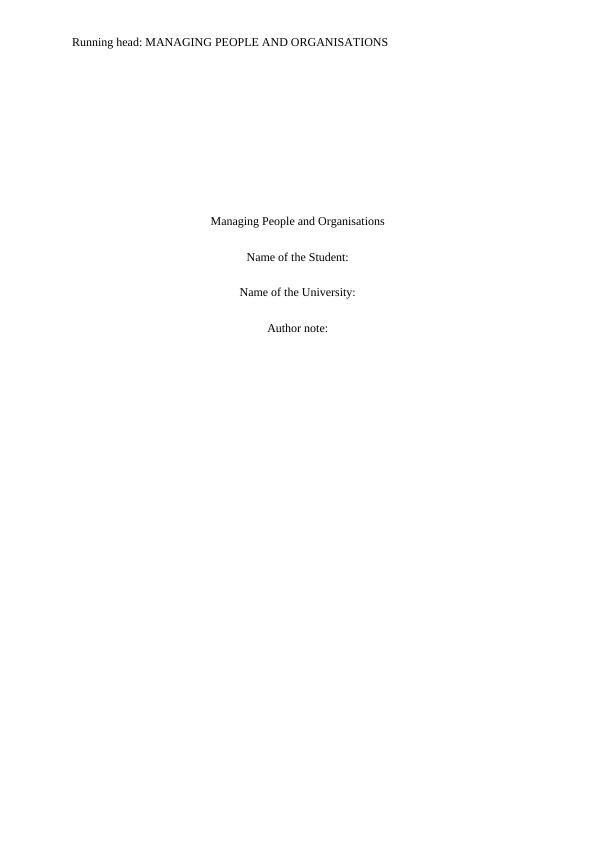Managing People and Organisations: An Analysis of IKEA's Organisational Culture
Examine and evaluate the strengths and weaknesses of an organization from the perspectives of the Structural Frame and Human resources.
12 Pages3036 Words345 Views
Added on 2023-06-08
About This Document
This report analyses IKEA's organisational culture based on the Four Frame Model by Bolman and Deal, specifically the Symbolic Frame. It examines how IKEA maintains an eco-friendly image and meets its sustainable objectives. The report critically applies William Ouchis’s “The Z Organisation”, Peter Senge’s “The Fifth Discipline: A Shift of Mind”, and Edgar Schein’s “The Concept of Organisational Culture: Why Bother?” to understand IKEA's organisational culture. The report concludes that IKEA is successfully sustaining its workforce and meeting its goals through a well-governed and clear organisational structure.
Managing People and Organisations: An Analysis of IKEA's Organisational Culture
Examine and evaluate the strengths and weaknesses of an organization from the perspectives of the Structural Frame and Human resources.
Added on 2023-06-08
ShareRelated Documents
End of preview
Want to access all the pages? Upload your documents or become a member.
Competitive Value Framework and Management Approach of IKEA
|9
|2634
|40
Organisation in Global Economy
|13
|3332
|77
Vision and Mission Statement | Ikea
|14
|3667
|88
IKEA Case Study: Strategic Management Analysis using Porter's Generic Strategy Model
|18
|4153
|316
Impacts of Politics, Power, and Culture on Organizational Behavior
|19
|6506
|42
Report on Operation Management in Business - IKEA
|17
|4118
|29




